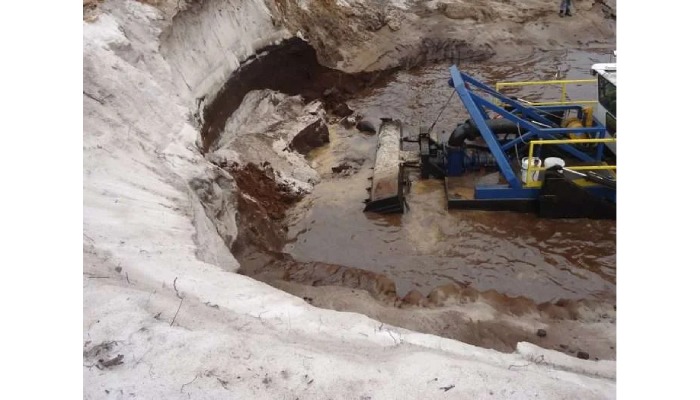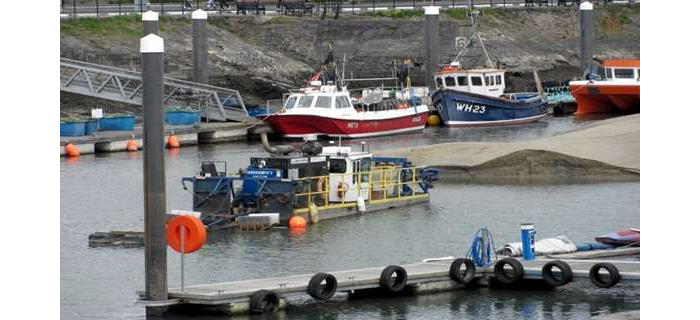
A sand dredge is a powerful and vital piece of equipment in a variety of industries—from construction and mining to environmental remediation and land reclamation. These machines play a critical role in removing sediment, maintaining waterways, and extracting valuable materials. However, like any complex equipment, regular maintenance is essential to ensure they operate efficiently and to minimize costly downtime.
In this guide, we’ll explore the top sand dredge maintenance tips that will help extend the life of your equipment, boost productivity, and prevent unexpected breakdowns.
Why Sand Dredge Maintenance Matters?
Whether you operate a cutter suction dredge, hopper dredge, or a jet-lift system, consistent maintenance offers several benefits:
- Minimized Downtime: Unplanned outages can halt operations for days, leading to financial losses.
- Extended Equipment Life: Proper care helps prevent premature wear and tear.
- Improved Efficiency: Well-maintained dredges perform better and consume less energy.
- Safety Assurance: Prevents dangerous malfunctions that could jeopardize operator safety.
Now, let’s dive into the best practices for keeping your sand dredge running smoothly.

Establish a Preventive Maintenance Schedule
A proactive approach is the cornerstone of effective sand dredge upkeep. Create a detailed preventive maintenance (PM) schedule that outlines:
- Daily, weekly, monthly, and annual maintenance tasks.
- Key components to inspect (pumps, engines, cutterheads, hydraulic systems, etc.).
- Lubrication intervals for moving parts.
- Downtime windows for major overhauls.
Make sure this schedule is followed rigorously by your maintenance team and integrated into operational planning.
Inspect and Maintain Dredge Pumps Regularly
The pump is the heart of your sand dredge. Regular checks are necessary to ensure it operates efficiently.
Checklist for Pump Maintenance:
- Inspect impellers and wear plates for erosion or corrosion.
- Check for leaks in seals and gaskets.
- Monitor pressure readings for inconsistencies.
- Clear out blockages in suction or discharge lines.
- Replace worn bearings and lubricate as needed.
Neglecting pump maintenance can significantly reduce dredging capacity and increase energy consumption.
Monitor Hydraulic Systems
The hydraulic system controls many of the dredge’s critical functions—from cutterhead movements to swing winches. Keep a close eye on:
- Fluid levels and quality (change if discolored or contaminated).
- Hydraulic hoses for cracks or leaks.
- Pressure readings and temperature variations.
- Cylinder seals and connections for wear and tear.
Contaminated or degraded hydraulic fluid can damage expensive components and lead to complete system failure.
Pay Attention to the Cutterhead
In cutter suction dredges, the cutterhead bears the brunt of the action. It’s constantly exposed to abrasive sand, gravel, and debris, which makes it vulnerable to wear.
Cutterhead Maintenance Tips:
- Check for worn or missing cutter teeth and replace as necessary.
- Inspect shaft alignment and bearing conditions.
- Clean off accumulated sediment or debris.
- Monitor vibration levels for imbalance or misalignment issues.
Frequent inspections reduce the chance of unexpected failures during operation.
Electrical System Checkups
Modern sand dredges come equipped with complex electrical systems to power lights, control panels, sensors, and other onboard electronics.
Routine tasks should include:
- Checking cable insulation and wiring for corrosion or wear.
- Testing grounding systems.
- Ensuring sensors and automation systems are properly calibrated.
- Cleaning contactors and terminal boxes.
Electrical faults can halt operations and pose safety risks, so early detection is key.
Engine and Power Source Maintenance
Whether your sand dredge uses diesel engines or electric motors, power source reliability is vital. For engines, focus on:
- Regular oil and coolant changes.
- Air and fuel filter replacements.
- Belt tension inspections.
- Battery testing and terminal cleaning.
For electric dredges, ensure motor bearings are lubricated, and cooling systems are functioning properly.
Hull and Floating Line Inspections
The structural integrity of the hull and floating discharge lines is just as important as mechanical components.
Checklist:
- Inspect hull for corrosion, leaks, or hull plate damage.
- Pressure-test floating pipelines periodically.
- Ensure floats and pontoons are stable and secure.
- Remove any marine growth or debris accumulation.
Neglecting this can lead to catastrophic water ingress or pipeline ruptures.
Conclusion
Maintaining a sand dredge is no small task, but it’s a crucial investment in operational success. With a structured preventive maintenance program, well-trained personnel, and access to spare parts and monitoring tools, you can significantly reduce unplanned downtime and boost productivity.
By focusing on the vital systems—from pumps and hydraulics to engines and electricals—you not only extend the lifespan of your equipment but also ensure a safer, smoother, and more profitable dredging operation.
Remember: prevention is always cheaper than repair. Implement these sand dredge maintenance tips today, and keep your operations flowing without disruption.